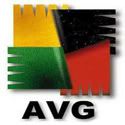Jimmy Kurnia Indradjaya |
| Google SEO Rangkings and Page Load Time Posted: 09 Jul 2011 06:06 AM PDT
You can try to check your website load time with this free speed test tool You must do whatever you are able to ensure that your websites are loading as fast as possible. There might be several factors why a website isn't loading as quickly as it should. There are a number of well-known tools which may assist you easily compress and decompress your files. Several of these kinds of applications, nevertheless, may actually turn into the trigger of slow page loads. The first action in this kind of process is to establish the rate at which your webpages are currently loading. Next you can utilize one of the recommended compression resources to help increase the loading time of your webpages. How to improve your website speed
This suggestion may seem stupid, however please look at the website one more time: do you absolutely need this kind of background sound (a lot of people find them irritating anyways). Is that big GIF animation with bouncing rabbit actually that cool ? And do you actually need this crappy JavaScript code for the flying clock ? Keep in mind, all this items requires time and bandwidth to be loaded with each page view and do not forget the most essential thing: People are browsing your website to obtain information – simply provide them with what they expect ! Don’t put tables within another tables – the web browsers require a lot longer to parse this. By utilizing a linked Cascading Style Sheet, that is simply a group of instructions of how to represent components your source code will certainly be a lot lighter, consequently load faster. For instance, you may swap this code: <div align=”right”><font face=”Arial, Verdana, Sans Serif” color=”#008000″ size=”3″><b>Search Engine Optimization</b></font></div> to something like this: <div>Here is some text</div> See the big difference ? There are lots of great internet sources where you are able to discover some CSS basics. Spend some time in it – it’s really worth it ! Images would be the most heavy portion of numerous websites. Make an effort to decrease the number of pictures as much as you are able to. Eliminate all the complicated GIF animations and swap all of them with static pictures. Think about utilizing reduced clickable thumbnails rather than large images wherever possible. Lower the filesize of your pictures – there are plenty of free tools out there. For instance, GIFReducer for GIFs and JPEGReducer for JPEGs. Utilize GIFs rather than JPEGs. JPEGS are just best for fine images like photographs, for all other web images GIF is generally a better option. A lot of WYSIWYG HTML editors keep plenty of unnecessary code like empty tags (like ) and comments inside your source code. take them off with a easy text editor for a quicker website loading. Each unnecessary space between your tags and new line characters are raising your page size. You are able to eliminate them very easily with this free HTML Optimizer Jimmy Kurnia Indradjaya is a post from: Peluang Usaha Jimmy Kurnia Indradjaya is a post from: Peluang Bisnis |
| You are subscribed to email updates from Jimmy Kurnia Indradjaya To stop receiving these emails, you may unsubscribe now. | Email delivery powered by Google |
| Google Inc., 20 West Kinzie, Chicago IL USA 60610 | |











0 komentar:
Post a Comment